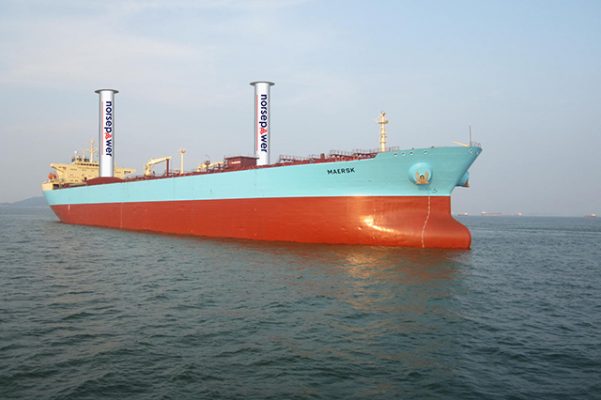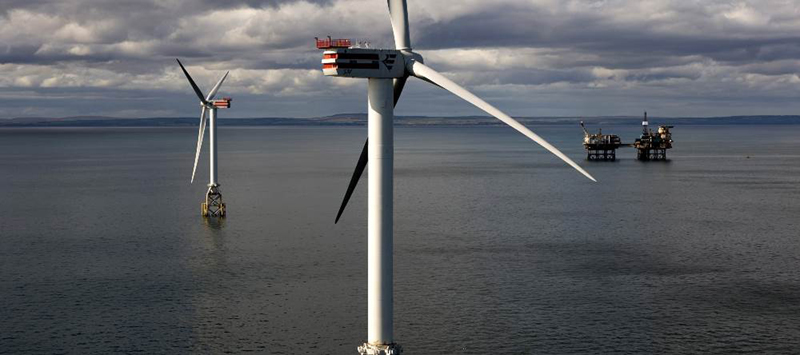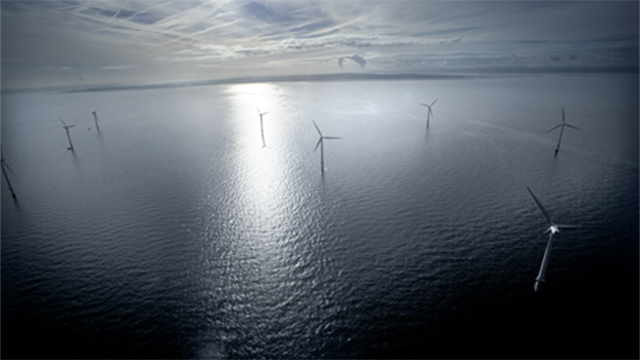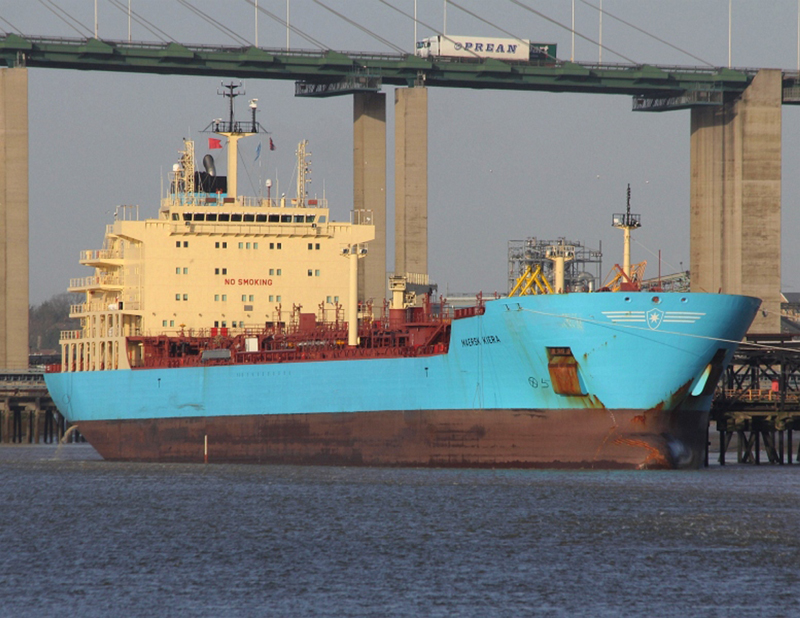Flettner rotor sails will be installed and trialled on board a Maersk Tankers-owned vessel, marking the first installation of wind-powered energy technology on a product tanker vessel.
The rotor sails will be fitted during the first half of 2018, before undergoing testing and data analysis at sea until the end of 2019, in an initiative by Norsepower Oy Ltd, Maersk Tankers, the UK’s Energy Technologies Institute (ETI), and Shell Shipping & Maritime.
Maersk Tankers will supply a 109,647-deadweight tonne (DWT) Long Range 2 (LR2) product tanker vessel which will be retrofitted with two 30m-tall by 5m-diameter Norsepower Rotor Sails.
Norsepower’s fuel-efficient technology is expected to save 7-10% in fuel consumption and associated emissions.
The project is majority funded by ETI with contributions from Maersk Tankers and Norsepower.
Shell will act as project coordinator, and provide operational and terminal or port consultancy to the project team, while Maersk Tankers will provide technical and operational insight.
Tuomas Riski, Norsepower CEO, said: ‘We are privileged and excited to be collaborating with Maersk Tankers, Shell, and the ETI on this project. We are optimistic that support for this trial from these industry leading organisations will open up the market for our technology to a larger number of long-range product tanker vessels – paving the way for ship fuel efficiencies, and ultimately reducing emissions, including greenhouse gases.
‘As an abundant and free renewable energy, wind power has a role to play in supporting the shipping industry to reduce its fuel consumption and meet impending carbon reduction targets.’

Flettner rotor project group
Andrew Scott, programme manager HDV marine and offshore renewable energy, the ETI, added: ‘Flettner rotors have the potential to reduce ship fuel consumption substantially, especially on tankers and dry bulk carriers.
‘It is one of the few fuel-saving technologies that could offer double-digit percent age improvements. To date, there has been insufficient full scale demonstration on a suitable ocean going marine vessel to prove the technology benefits and operational impact. Demonstrating the technology in this project will make it more attractive to shipping companies and investors, and could play a significant role in reducing the fuel costs and improving the environmental impact of shipping in the future.’
The Norsepower Rotor Sail Solution is a modernised version of the Flettner rotor – a spinning cylinder that uses the Magnus effect to harness wind power to propel a ship. Each Rotor Sail is made using the latest intelligent lightweight composite sandwich materials, and offers a simple yet robust hi-tech solution. When wind conditions are favourable, the main engines can be throttled back, providing a net fuel cost and emission savings, while not impacting scheduling.
Independent experts will analyse the data gathered from the project before publishing technical and operational insights, and performance studies.
Potential game changer for the wind energy market
A £5million boost for Britain’s Kite Power Systems' kite power technology, which has the potential to transform the global offshore…
Nav in a nutshell: Deploy the thinking man’s passage plan
Brain power is still best for calculating weather, wind and tidal information, says Dick Everitt
Ketch out to inspire wind-powered cargo ships
Vintage trader taking olive oil to Brazil
Offshore wind to meet 10% of UK electricity demand by 2020
The Crown Estate says offshore wind energy is on course to double its capacity by 2020
Hornsea Project One offshore wind farm gets the go ahead
The offshore wind farm project for the Yorkshire coast is scheduled to commence operation by 2020
Liverpool Bay wind farm to quadruple in size
DONG Energy is adding 32 more turbines to the existing 25 at Burbo Bank in Liverpool Bay, in an extension…
£3million investment in wave energy projects
"This funding could result in longer lasting wave converters that are better able to harness the power of the sea…
Satellite monitoring captures tanker’s pollution
Tanker's oil slick, too close to land, costs owner £22,500












